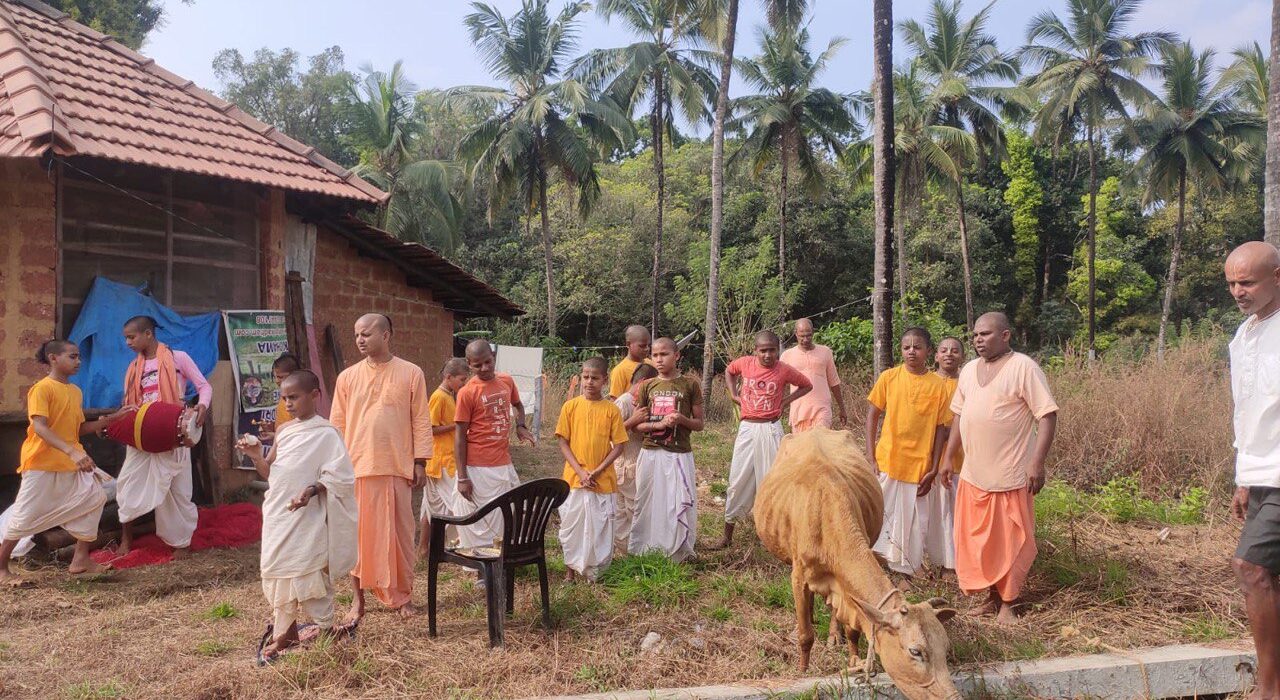Srila Prabhupada envisioned that 50,000 devotees would make up the Mayapur community.
If Mayapur is to be known and be developed as a Mayapur City, there needs to be provided to simultaneously develop a Mayapur Village where the majority of devotees will live a more simple life based on principles of self-sufficiency with Vedic agriculture and cow protection as the basis of their economy or sustenance (this will naturally include all types of arts, crafts and cottage industries involving traditional technologies).
It will not be possible to have the majority of those devotees living as most of them live in present-day Mayapur, I.e. most of them living in expensive apartments, most of them not growing their own food, many having to leave Mayapur to earn money to maintain their high cost of lifestyle in Mayapur.
As any major Vedic city was supported and maintained by surrounding agricultural and dairy-based communities who produced food, cloth, and other daily necessities (Nanda Maharaja would yearly travel from Vrindavan to pay his taxes in the city of Mathura), there is a need to formulate a plan for creating the Greater Mayapur, made up of committed and trained families living in various villages surrounding the core city center of Mayapur City.
Such devotee families would live independently in small, medium, and larger clusters within different villages surrounding Mayapur City, sharing the land that would be owned and shared by their registered Cooperative where individuals are shareholders and abide by the commonly agreed upon directives of the Cooperative in keeping with government regulations.
In this way, a large number of devotees who wish to live this more simplified and natural lifestyle can gradually be trained and introduced to this proposal.
Simultaneously, a group of devotees will need to locate suitable land for developing such Vedic communities.
A Master Plan will also need to be formulated regarding the modus of operation of such Cooperatives, within Greater Mayapur, in keeping with the existing government laws and in keeping with the basic standards of ISKCON so that these Cooperatives can be recognized and approved by the administration of the Mayapur City.
In a country like Canada, the working model of Cooperatives has gained popularity in the last few decades. The Saranagati Village in Western Canada has followed this model for the last thirty-plus years and has overall given good results.
There is an ongoing effort by devotees in Canada headed by HH Bhaktimarga Swami, the local GBC, to establish a rural community for every city temple in the country. This was actually Srila Prabhupada’s strategy, that every city temple should have a farm community within a 50-kilometer or mile radius.
This instruction by Srila Prabhupada has become even more relevant in the context of our present-day global failing economies driving us towards a major global recession.
It’s time to adopt the Vedic paradigm of simple living and high thinking.
If all GBC members adopted this policy vigorously we would see the beginnings of a serious global reform.
City, our Preaching Basis
Country, our Living Basis
By: HH Bhakti Raghava Swami

